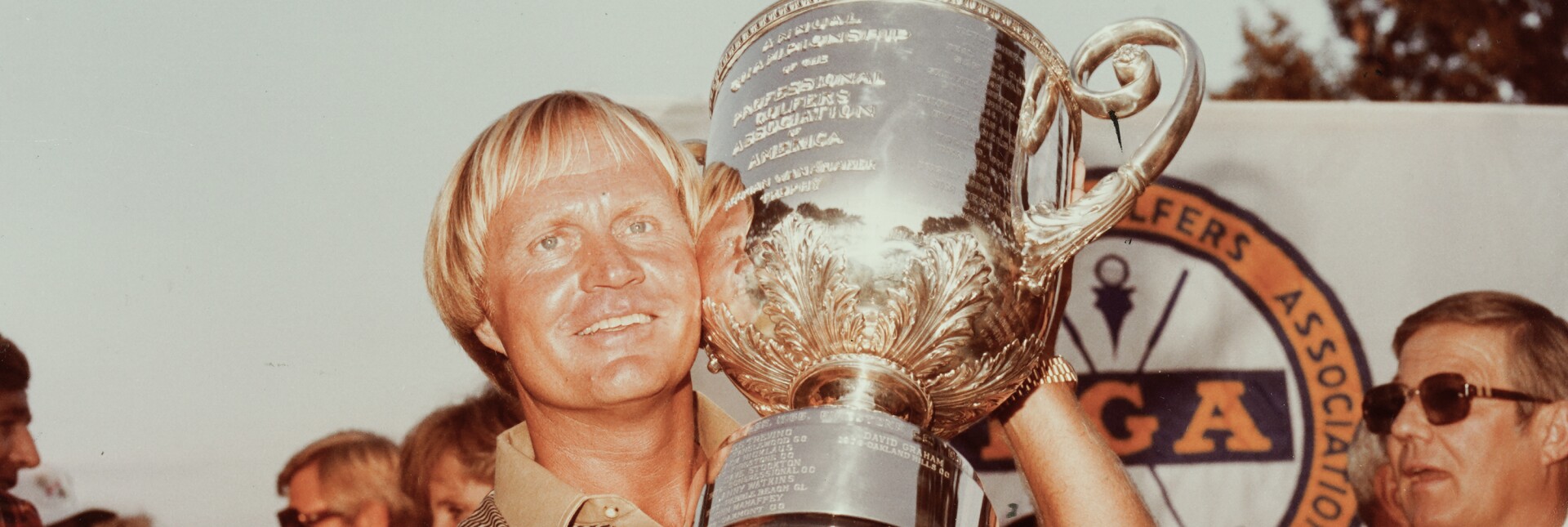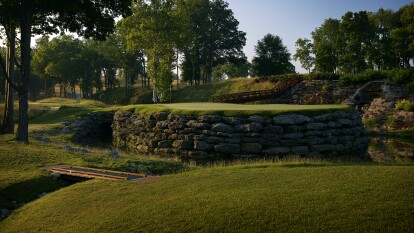When Jack Nicklaus came to Oak Hill Country Club’s East Course in 1980 for the 62nd playing of the PGA Championship, he had already reclaimed his spot on a pedestal atop the golf world. After failing to capture a single PGA Tour win during the 1979 season—the first time that had happened since he joined the Tour in 1962—there were whispers that the game had passed the Golden Bear by.
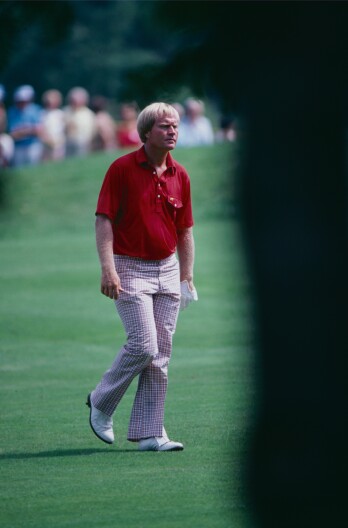
Many were looking to a corps of younger players that included Fuzzy Zoeller and Seve Ballesteros, both of whom captured majors during the ‘79 campaign, to dominate the game.
But Nicklaus ended any premature talk about his demise with an impressive U.S. Open victory at Baltusrol in the 1980 U.S. Open, his first major of the new decade. Two months later, Nicklaus came to Oak Hill, a course he had long appreciated, with a chance to secure a fifth PGA Championship and a 17th major.
Take it from @jacknicklaus — one of the best putters of all time — the greens at Oak Hill are not easy to navigate. #PGAChamp pic.twitter.com/c06fZnRfkt
— PGA Championship (@PGAChampionship) May 5, 2023
Nicklaus’ connection—and commitment—to the PGA began 30 years earlier, when the 1950 playing was at Scioto Country Club in Columbus, Ohio, where the Nicklaus family had a membership.
With the help of his teacher, Scioto’s head professional Jack Grout, a 10-year-old Nicklaus gained access to the locker room to meet many of the stars of the game and collect autographs from Hall of Famer Sam Snead, eventual champion Chandler Harper, who had been assigned to father Charlie Nicklaus’ locker, and, most memorably, Lloyd Mangrum.
“I can still see that slim, dark figure sitting at a table with a fan of cards in one hand and a glass of hooch in the other and a cigarette dangling from his lips, and recall how intimidated I was when he turned to me and gave me that famous tough look of his and snarled, ‘Whaddya want, kid?’” Nicklaus wrote in My Story, his 1997 autobiography. “But he signed my autograph book, and I remember being extremely proud of my courage in standing up to such a fearsome character.”
Nicklaus often has credited that experience with shaping his desire to be a professional golfer when he grew up.
By the time he got to Oak Hill, courage and Nicklaus were synonymous. But perhaps the most intriguing piece of what was an otherwise dominant performance was his inaccuracy off the tee. After looking sharp earlier that summer, the Ohio native sprayed the ball around a course that demands precision.
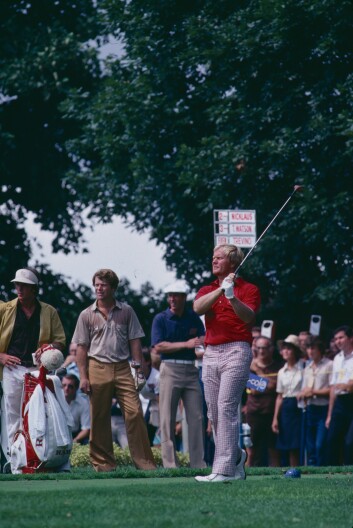
He had one secret weapon, however: a putter that was almost as hot as western New York temperatures that climbed into the 90s.
“Prior to the PGA Championship at Oak Hill, I had played pretty well that year,” Nicklaus said. “Unfortunately, going into that tournament, I started hitting the ball poorly. And frankly, I hit the ball poorly all week. But my putter was fantastic. I ran the tables with my putter.”
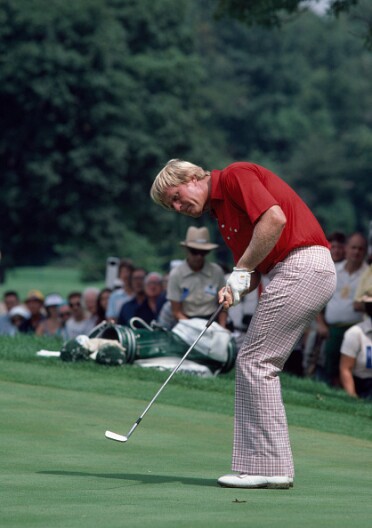
Nicklaus opened the tournament with rounds of 70 and 69, leaving him one stroke behind leader Dr. Gil Morgan and tied with Lon Hinkle.
In the third round, however, he lit up the greens, making up for wayward shots by draining a multitude of important putts. By the end of the day, he’d gone from one down to up three on Hinkle.
“I hit the ball all over the place,” he later said. “And when you hit the ball all over the place and still shoot 66, that’s pretty good.”
The Golden Bear coasted home to a comfortable win over runner-up Andy Bean, who finished seven shots behind. His margin of victory was the best in PGA Championship history until surpassed by Rory McIlroy’s effort at the Ocean Course of the Kiawah Island Golf Resort in 2012.
With the win, Nicklaus earned his fifth and final Wannamaker Trophy, locking him in a tie with hometown Rochester hero Walter Hagen for the all-time PGA Championship record. He would go on to win one more major, the 1986 Masters.
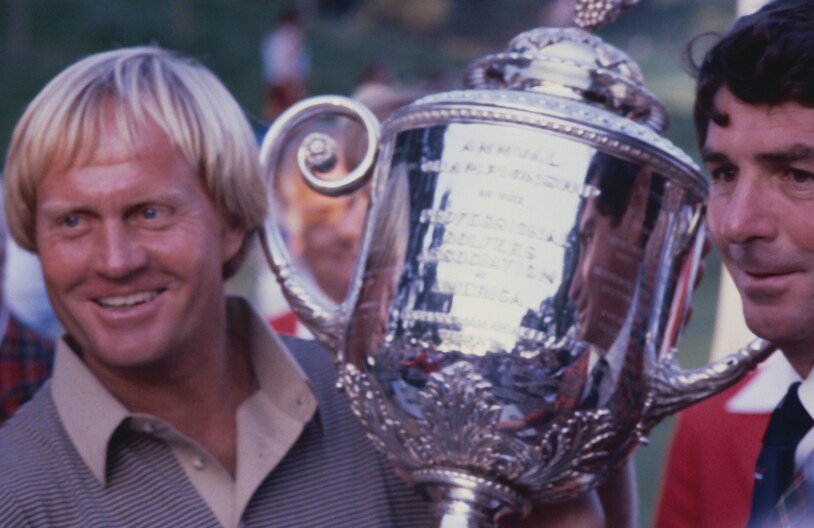
Through the years, Nicklaus has heaped praise on Oak Hill, which ranks 42nd on Golfweek’s Best Classic Courses list, just a single spot behind Southern Hills, which hosted the 2022 PGA Championship.
“Oak Hill is a beautiful, northern, tree-lined, softly rolling piece of property that was very enjoyable to play. It’s a good test,” Nicklaus said. “Nobody has ever really chewed it apart, and it’s one you’ve got to play smart on, but you’ve got to control your golf ball, and you’ve also got to putt, because the greens are not easy greens.”
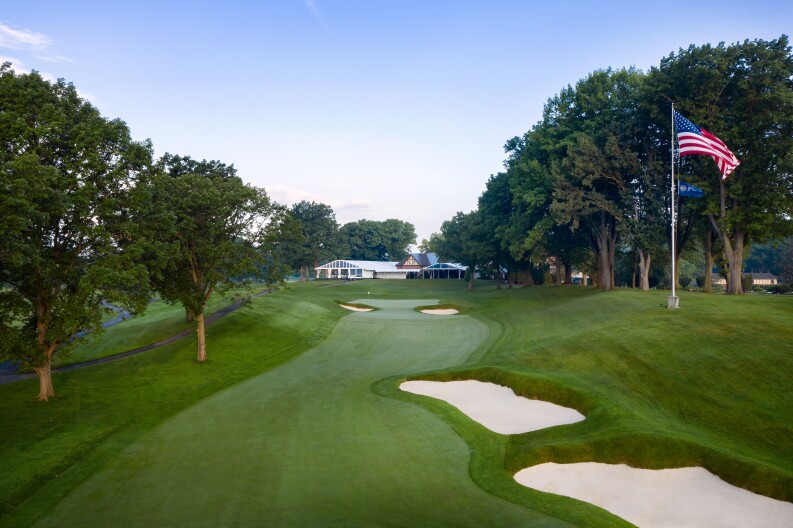
Unless, that is, you putt like Jack Nicklaus.
Golfweek’s Adam Schupak contributed to this report.

